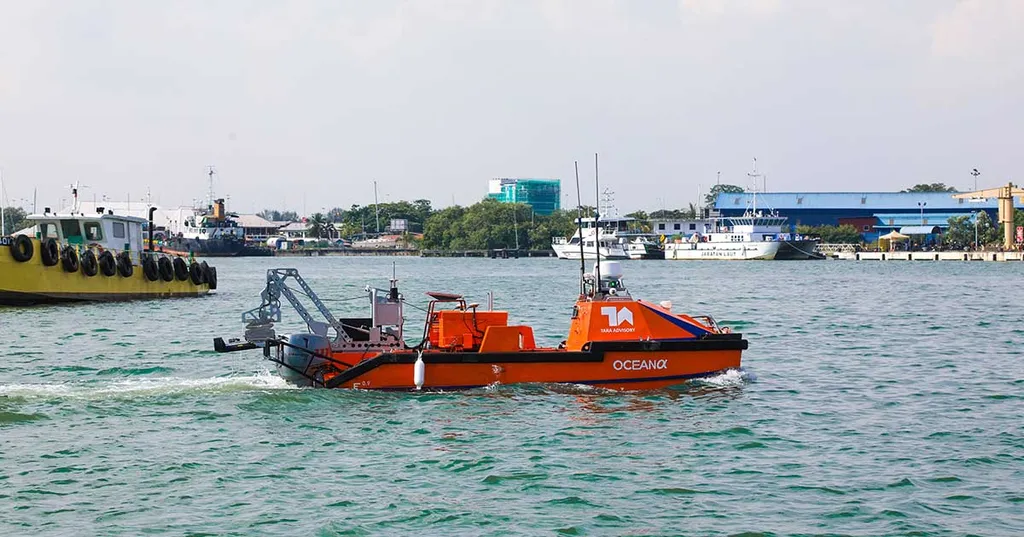In late June 2025, OceanAlpha’s L25 marine unmanned surface vehicle (USV) made waves in the maritime industry, quite literally, by successfully completing its first public demonstration in Malaysia. The event, held at Port Klang, showcased the L25’s marine survey capabilities in real-world conditions, offering a glimpse into the future of offshore survey operations.
The L25 USV tackled a longstanding challenge in the industry: crew dependence and the high costs associated with support vessels for operations beyond line-of-sight (LOS) control range. By conducting a survey mission 33 kilometers offshore while maintaining continuous, stable satellite communications and real-time payload data transmission, the L25 validated its Over-the-Horizon (OTH) capability. This is a game-changer for large-scale or remote survey areas, where traditional methods often fall short.
In the bustling waters of Port Klang, the L25’s perception systems proved their mettle. The vessel autonomously navigated around moored vessels and dynamically adjusted its course to maintain safe distances from high-speed marine traffic. This level of autonomy is not just impressive; it’s a practical solution to the complexities of operating in congested waters.
The L25’s integrated automated towfish system also stole the show. It demonstrated seamless deployment and retrieval of side-scan sonar equipment, eliminating the need for traditional manual winching. This not only reduces operational risks but also streamlines the survey process, making it more efficient and cost-effective.
One of the most significant highlights was the L25’s ability to transmit multibeam, side-scan, and sub-bottom profiler data in real time. This capability allows survey teams to conduct immediate quality control and mission adjustments from shore, significantly reducing decision-making timelines. As one industry expert noted, “Real-time data transmission is a game-changer. It allows us to make informed decisions on the fly, which can save time and resources.”
The demonstration was a collaborative effort, with key industry partners playing crucial roles. The Malaysian Maritime Department facilitated operational approvals, while Tara Advisory co-hosted the event. Technical partners, including TA Geosolutions, Hidrokinetik Technologies, and Clockwise Subsea (NOR Offshore Rental), contributed specialized equipment and regional operational expertise. This collaboration underscores the industry’s recognition of the L25’s potential and the collective effort to advance maritime survey capabilities.
So, what does this mean for the future of the maritime industry? The successful demonstration of the L25 USV signals a shift towards more autonomous and efficient survey operations. As the technology matures, we can expect to see wider adoption of USVs, not just in marine surveys but also in other offshore operations. This could lead to significant cost savings, improved safety, and enhanced data collection capabilities.
Moreover, the real-time data transmission capability of the L25 could revolutionize decision-making processes. By providing immediate access to high-quality data, survey teams can make quicker, more informed decisions, ultimately speeding up project timelines and reducing operational risks.
However, the journey towards full autonomy in maritime operations is not without its challenges. Regulatory frameworks, cybersecurity concerns, and the need for robust communication networks are just a few hurdles that need to be addressed. But with industry collaboration and continuous technological advancements, these challenges can be overcome.
In the words of a seasoned maritime professional, “The future is autonomous, and the L25 is a step in the right direction.” As the industry continues to evolve, the L25 USV serves as a beacon of innovation, paving the way for more efficient, safer, and cost-effective maritime operations.

